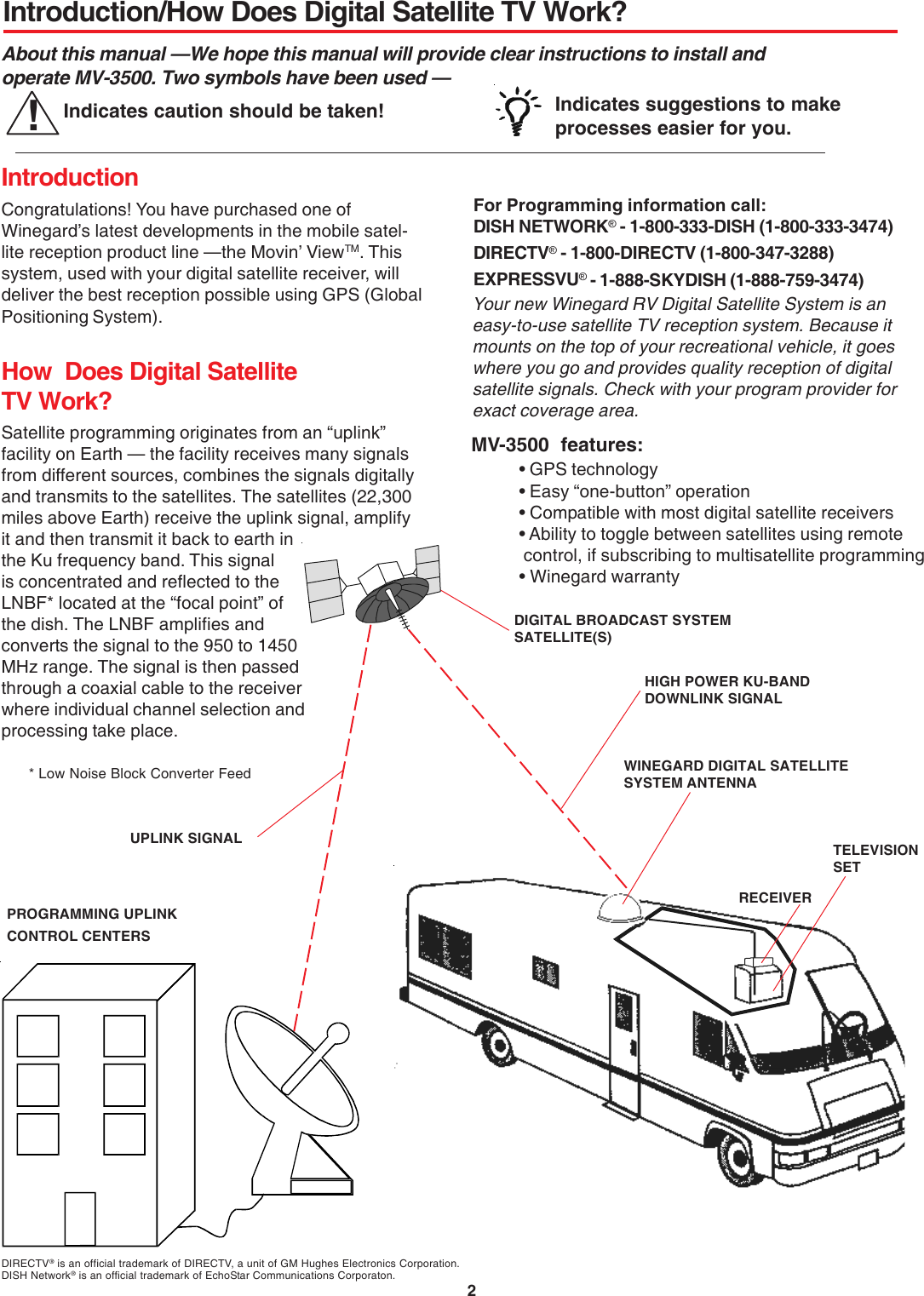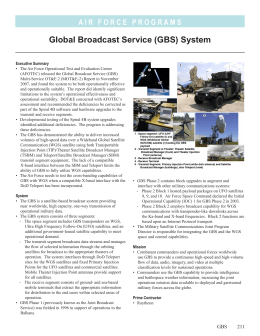Global Broadcast System Technical Manual
Global broadcast system technical manual, SopCast 3.4.0, JetAudio 8.0.16, Broadcast Processor 2.0.3. • The program manager is developing the Global Broadcast. Global Broadcast Service (GBS) System. Suite software and technical manuals prior to.


Global Broadcast System Global Broadcast System (GBS) The Global Broadcast Service (GBS) capitalizes on the popular commercial direct broadcast satellite technology to provide critical information to warfighters. The GBS system is a space based, high data rate communications link for the flow of information from the United States or rear echelon locations to deployed forces. GBS provides a worldwide, high capacity, one-way transmission means for a variety of data, imagery, and other information required to support joint forces.
The broadcast is conducted under the auspices of the GBS Program Office and is implemented by the NRO Operational Support Office (OSO) and the Defense Information Systems Agency (DISA). In 1996 NRO and DoD rapidly integrated key commercial technologies to deploy the first operational use of the GBS in the peacekeeping operation in Bosnia and called it the Joint Broadcast System (JBS), which is the GBS European counterpart. The GBS system will 'push' a high volume of intelligence, weather and other information to widely dispersed, low cost receive terminals, similar to the set-top-box used with commercial DBS. The system will include a capability for the users to request or 'pull' specific pieces of information. These requests will be processed by an information management center where each will be prioritized, the desired information requested and then scheduled for transmission.
Global broadcast system technical manual, Broadcast Processor 2.0.3, SoundCode For Broadcast 1.0.1, BMS Business Music System 4.08.
Ikusa Megami Zero Sound Collection Agency. GBS will be a system of information sources, uplink sites, broadcast satellites, receiver terminals, as well as management processes for requesting and coordinating the distribution of information products. Each GBS satellite in a global constellation will be served by a primary uplink site where information products are assembled and transmitted up to a high-powered satellite for relay to forces over a large geographic area. GBS will also have the capability to inject products directly from the theater it serves. The receive terminals for information can be large, but what makes GBS so attractive is the ability to provide high-volume data directly into 18-inch antennas. Mobile force elements are no longer restricted by the requirement for large, fixed antennas to receive information formerly relegated only to command centers. Since GBS enables the storage, retrieval and dissemination of huge information files that would quickly exceed the capability of most mobile users, the tailoring of the “push and pull” dissemination architecture for GBS is a significant challenge. Importantly, the GBS broadcast, capable of multiple levels of security, will be one-way; it will only distribute information.
Requests for information (user “pull”) will be made via other communications means. This request process will not supplant any existing collection management process. GBS is an extension of the Defense Information Systems Network (DISN) and a part of the overall DoD MILSATCOM Architecture. As such, it will employ an open architecture which can accept a variety of input formats. It will exploit commercial off-the-shelf (COTS) technology. It will interface with, and augment other major DoD information systems, such as the Global Command and Control System (GCCS), as well as other theater information management systems.
Eventually, GBS may supplant some theater information management systems. The GBS system consists of broadcast management, space, and terminal segments. The broadcast management segment, integrates, encrypts and packages multi-media information and provides a bit stream to the Primary Injection Points (PIP) for Radio Frequency (RF) transmission to the satellite. The user receive terminal, consisting of a small satellite antenna, low noise block and receiver, will receive and convert the RF downlink signal into a bit stream for receive broadcast management decryption and distribution to end users.